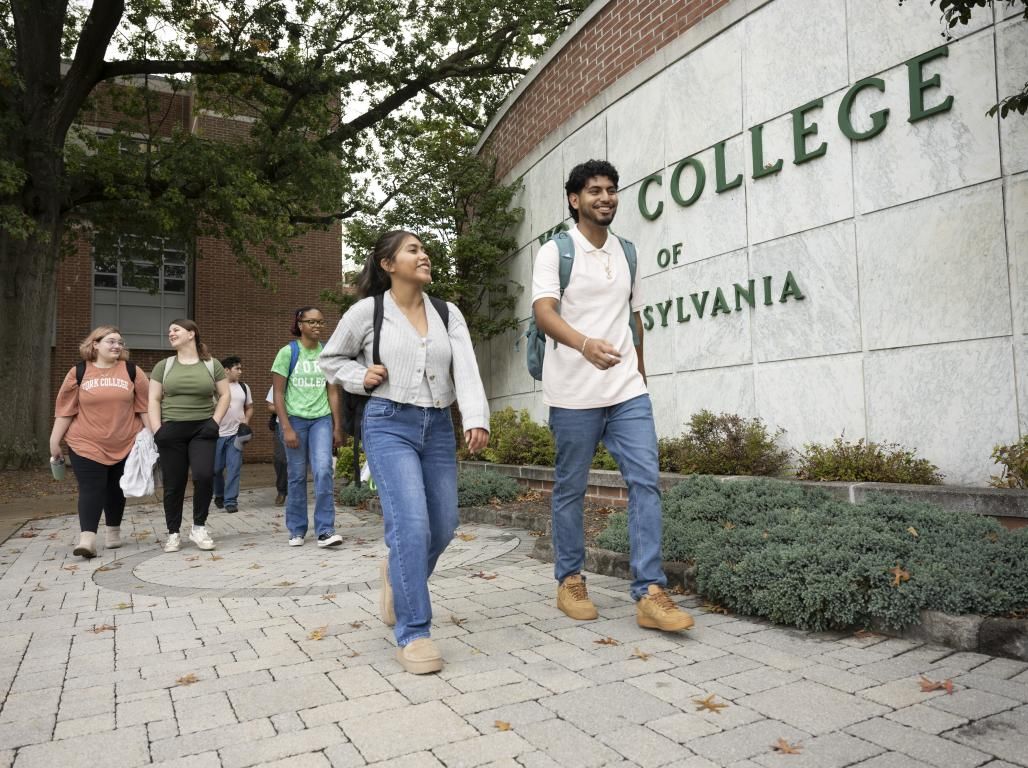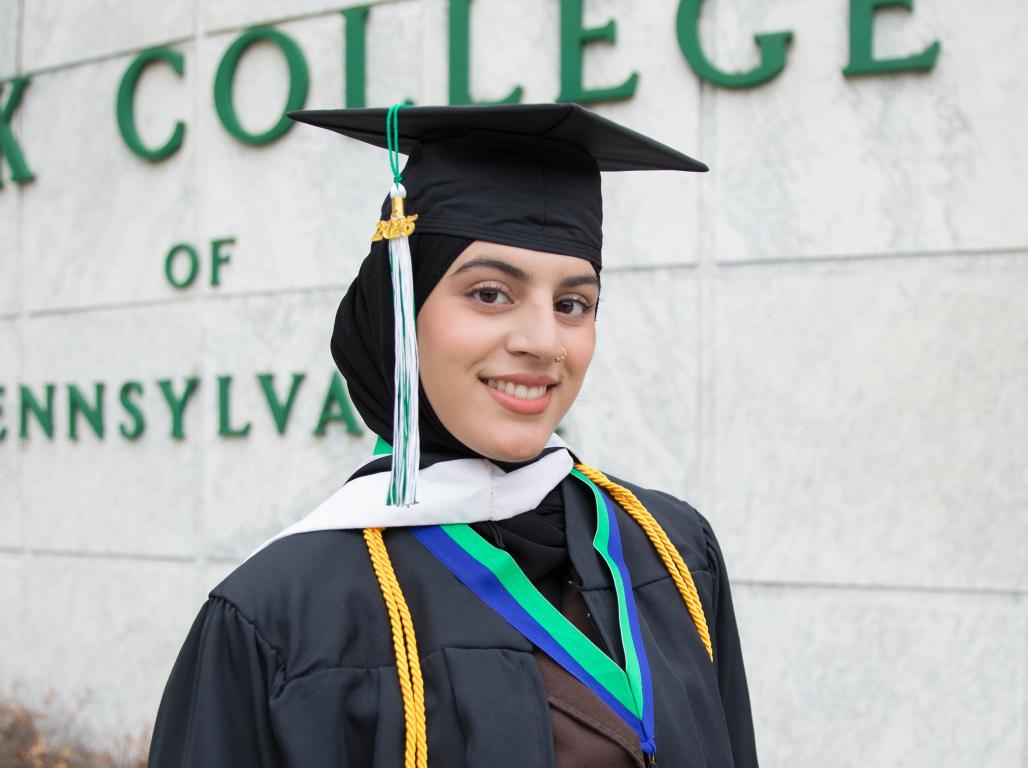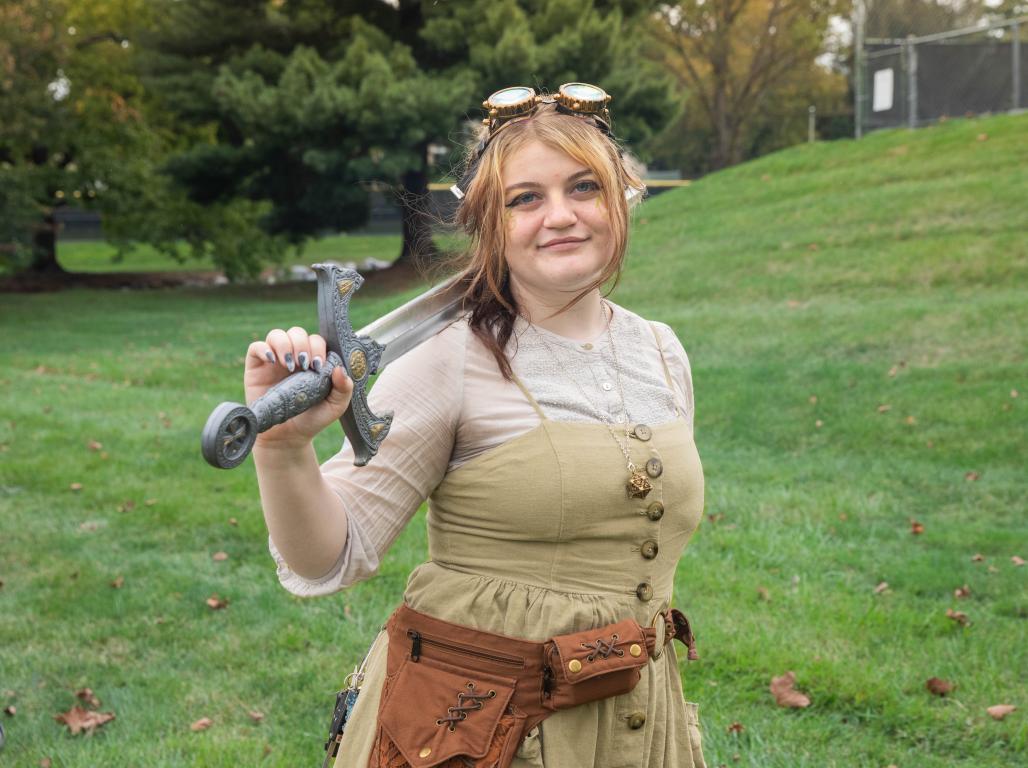First-Year Honors Community Students Share Ideas to Help Appell Center Celebrate Its 100th Anniversary

The Appell Center for the Performing Arts in downtown York celebrates its 100th anniversary in 2025.
Thanks to some York College students, the celebration may include members of the local community who are less familiar with the Center.
Each year, Honors Community students enrolled in a first-year seminar (FYS) are presented with a "problem" to examine as part of a community-based learning course. In the past, students have considered how to innovate Central Market, the York County Food Bank, and several downtown cultural/recreational locations. This semester, they addressed ways to help the Appell Center for the Performing Arts celebrate its 100th anniversary.
Dr. Karin Swartz, Assistant Dean of the Center for Community Engagement, who co-taught the course, knew that the big anniversary was coming up through AJ Myers, Director of Education and Community Engagement at the Center. After clearing the project with the Center’s President and CEO, Swartz and FYS Instructor Beth Dunham put their students to work in teams.
Students toured the facility before completing empathy interviews (one-on-one conversations using open-ended questions to elicit stories about specific experiences and help uncover unacknowledged needs) with Myers, Appell Center board and audience members, and community members.
Through the interviews, students sought to find out “what makes the Appell Center special,” according to Christian Nguyen, a first-year Media and Film major from York. “We heard from volunteers about the variety of events held there,” he said. “Others told us what you would expect: the beauty of the preserved theater, architecture, the Regal Cinema experience. But streaming services and other ways to view events have taken audiences away from live performances, and the Center’s survival depends on reaching out to different groups and finding ways of saying that it has a lot to offer everyone.”
“The goal was to come up with ways the Center could celebrate its anniversary that would include all parts of the community,” Swartz said. “This was also an opportunity to show that the Appell Center means something to lots of different people in our community.”
Students then did secondary research on their assigned topics and created prototypes of their ideas that they were able to test with other Honors Community students before presenting them to the Appell Center.
“Students got to tour the facility, ask questions, and then come up with ideas they presented during finals week at the Appell Center,” Dunham said. “They also interviewed folks connected to the Center, from employees to volunteers to attendees. They combined this primary research with secondary research to develop and pitch their final ideas.”
The prototypes presented ranged from a social media/TikTok campaign that hoped to attract a younger audience to a community mural depicting the arts and a yearlong series of classes celebrating a different style of art from each decade of the last 100 years.
“Our group defined the problem–the need for more outreach to bring a more diverse audience–and focused on the performance aspect,” Christian said. “To get the audience involved, we came up with the idea of a talent show that would feature all forms of art and photography in the lobby, with artists there to discuss their work, and the mainstage would be more like an America’s Got Talent production where people performed for cash prizes. The main goal was to get people in there so they could see what the Appell Center has to offer them.”
When the students presented their ideas to community stakeholders, including those they had interviewed earlier in the process, the response was good, according to Swartz. Some were easier to consider implementing than others, but all were based on the needs uncovered during the initial stakeholder interviews.
“Using the Design Thinking process meant that the ideas were totally driven by students trying to fill the needs they heard during the interviews,” she said. “They did a good job of looking across different opportunities to engage people; everything from social media to classes to events was proposed. It was good to see them look at different avenues to engage folks.”




